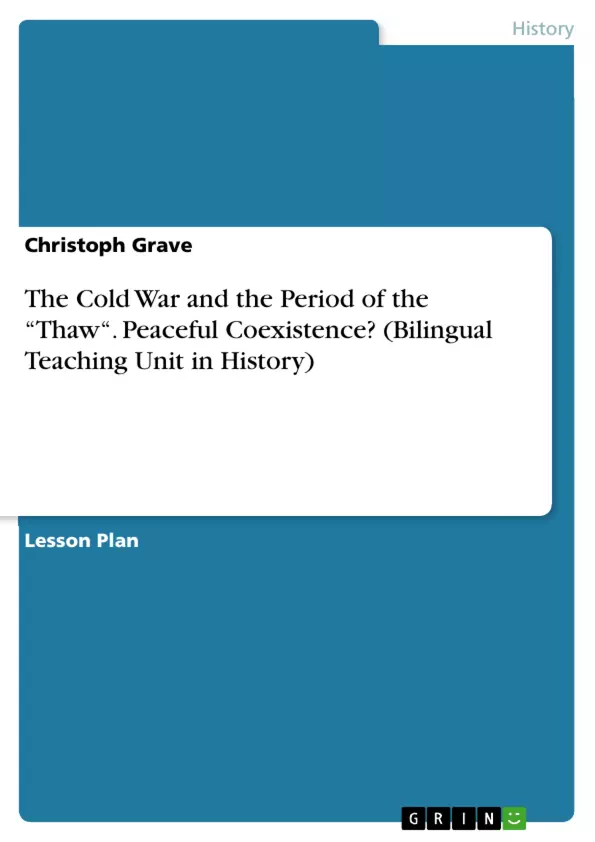The key concept of this teaching unit is “Global Interactions”. The reason for this concept becomes clear when you take into account that nowadays, global interaction continues to impact the world. Globalization, interdependence, and new media connect the people of most nations. Global interactions have also a magnificent impact on students as they transform everyday life (for example music, products, medical treatments and so on). These interactions broaden our view of the world. Furthermore, global interactions affect more than our personal lives. They also transform or destroy relationships among nations. Some effects are minor, but some bring significant challenges to our economic, political, and social systems. To make the impact of global interactions clear we will have a closer look on the international relations during the cold war, more precisely during the period of the “thaw”.
Inhaltsverzeichnis (Table of Contents)
- Subject and Grade Level
- Topic
- Time Frame
- Unit Question
- Key Concept
- Related Concept
- Areas of Interaction
- Approaches to Learning
- Assessment
- Knowledge and Understanding
- Thinking Critically
- Resources
- Technology
- Classroom Environment
- Teaching Strategies
- Teaching Methods
- Making Thinking Visible
- Unit's timetable
Zielsetzung und Themenschwerpunkte (Objectives and Key Themes)
This teaching unit aims to explore the concept of "Peaceful Coexistence" during the Cold War, specifically during the period known as the "thaw." By examining the interactions between the East and West, the unit seeks to understand the complexities of global interdependence and its impact on international relations.
- Global Interactions during the Cold War
- The concept of "Peaceful Coexistence" as a potential solution to the East-West conflict
- The role of interdependence in shaping international relations
- Comparing and contrasting the political systems of the East and West
- Developing critical thinking skills
Zusammenfassung der Kapitel (Chapter Summaries)
- This chapter provides an overview of the unit, including its context, subject, topic, time frame, and main question. It also introduces the key concept of global interactions and its relevance to understanding international relations during the Cold War.
- This chapter discusses the related concept of interdependence, emphasizing its significance for understanding the impact of global interactions on international relations. It also examines the specific area of interaction, "community and service," which will be explored in the unit.
- This chapter outlines the assessment criteria for the unit, focusing on knowledge and understanding as well as critical thinking skills. It also discusses the resources that will be used, including technology and classroom environment.
- This chapter details the teaching strategies that will be employed in the unit, including specific teaching methods and techniques for making student thinking visible. It also presents a timetable outlining the learning steps, content, methods, and time allocation for each stage of the unit.
Schlüsselwörter (Keywords)
The primary keywords and focus topics of this teaching unit include: Peaceful Coexistence, Cold War, East-West Conflict, global interactions, interdependence, community and service, critical thinking, political systems, and international relations.
- Quote paper
- M.Ed. Christoph Grave (Author), 2016, The Cold War and the Period of the “Thaw“. Peaceful Coexistence? (Bilingual Teaching Unit in History), Munich, GRIN Verlag, https://www.grin.com/document/370460



